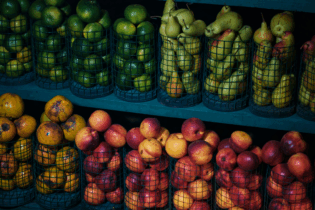Africa’s child mortality rate is high, the highest in the world. Malnutrition in sub-Saharan Africa sees one in eight children die before the age of five (according to UNICEF). “This, despite having the food to feed them”, says Hermann Haupt, CHEP Country GM sub-Saharan Africa.
“At 5% compared to the western world’s 60%, food waste in Africa (that by the consumer) isn’t the main problem,” stresses Haupt. “It is food loss – incidents during the early stages of the supply chain, from post-harvest and production to retail. We lose about 220 million tons of food this way annually, but the food deficit needed to feed the hungry is only 45 million tons. We need to resolve only 20% of the losses to fix this crippling problem.” Haupt alerted supply chain professionals at the recent 37th annual SAPICS conference for supply chain professionals to the severity of the food crisis. CHEP is a division of supply chain logistics giant Brambles, which is actively looking at ways to remedy the situation. A vicious circleA consequence of malnutrition, explains Haupt, is stunting, with 40% of the continent’s children physically and mentally underdeveloped as a result of malnourishment, making them more susceptible to disease and less able to learn and ultimately work and develop themselves. “We need to work hard to reduce and ultimately eliminate malnutrition, thereby improving people’s lives while creating a value-adding economically active population”, he says. “Africa has five times fewer roads than the developed world,” Haupt says. “On top of that, congestion at seaports and delays at border posts makes for a challenging cold chain environment.” Harmonised effort by industry, government Haupt pinpoints 5 stages of food loss and the crucial Supply Chain Management (SCM) details often overlooked:
Production: “Yield in Africa is just 1.1 ton per hectare, but 3.2 tons in the rest of the world!” he says. “Even a small increase in yield can make a massive difference to the malnutrition problem. We need to find a way to transfer skills to Africa’s farmers.”
Harvest processing: Problems include timing, storage, and refrigeration methods 3. Industry processing: taking consumer ready product and getting it to market. “Packaging is a major issue here,” Haupt explains. “When products are packaged in bulk or in containers that aren’t suitable, the packaging is easily crushed and the food wasted. Distribution and sales: forecasting is not accurate; resulting in oversupply and waste. Retailers focus only on displaying perfect looking food, rather than concentrating on whether the food is still nutritionally perfect. Waste: consumers buy too much and do not monitor sell-by dates. Haupt maintains that while some solutions, such as closer collaboration of Africa’s governments, building road/railways and processing facilities, are long-term; in the short term, the most sufficient supply chain is obviously one where the production facility is as close as possible to users. “Ultimately, we need a coordinated, collaborative effort if we are to make a difference here,” says Haupt, citing that the SCM industry is the place to start. “Correctly managing food supply chains can have an immediate result by overcoming obstacles in the getting of goods to those in desperate need,” ends Haupt.







